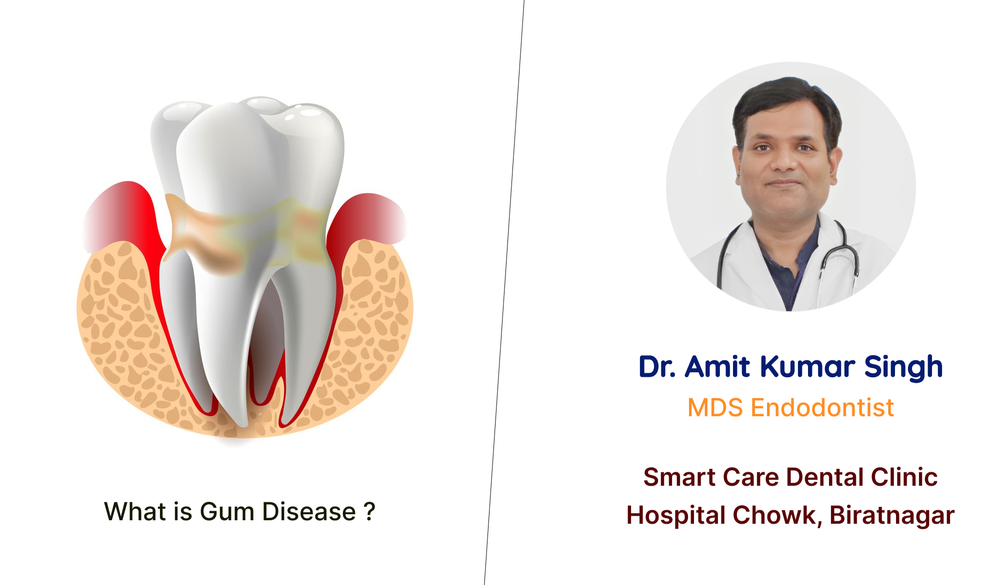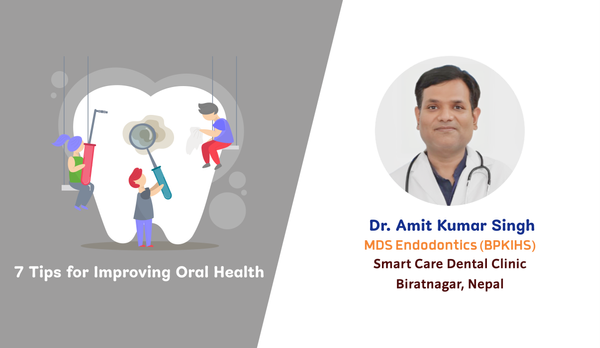Understanding Gum Disease: Causes, Symptoms, and Treatment Options
What is Gum Disease?
Gum disease, also known as periodontal disease, is an infection of the tissues that hold your teeth in place. It typically results from poor oral hygiene, which allows plaque—a sticky film of bacteria—to build up on the teeth and harden. In its early stage, it’s called gingivitis, and when it progresses, it’s known as periodontitis.
Causes of Gum Disease
- Poor Oral Hygiene: Inadequate brushing and flossing can lead to plaque buildup, causing gum irritation and inflammation.
- Smoking and Tobacco Use: Tobacco use weakens the immune system and impairs gum tissue, making it easier for infections to develop.
- Hormonal Changes: Changes during pregnancy, menstruation, menopause, and puberty can make gums more sensitive and susceptible to gum disease.
- Medications: Certain medications can reduce saliva flow, which protects the gums and teeth, leading to a higher risk of gum disease.
- Medical Conditions: Diseases such as diabetes, cancer, and HIV can affect gum health.
- Genetics: A family history of gum disease can increase your susceptibility.
Symptoms of Gum Disease
Early detection of gum disease is crucial for effective treatment. Be aware of these common symptoms:
- Red, Swollen Gums: Healthy gums are pink and firm. Redness and swelling are early signs of gingivitis.
- Bleeding Gums: Gums that bleed during brushing or flossing indicate inflammation.
- Persistent Bad Breath: Chronic bad breath can be a sign of bacteria buildup and gum disease.
- Receding Gums: When gums start to pull away from the teeth, it can expose the roots and increase sensitivity.
- Loose Teeth: As gum disease progresses, it can destroy the bone supporting your teeth, causing them to become loose.
- Painful Chewing: Discomfort while chewing can be a symptom of advanced gum disease.
Treatment Options for Gum Disease
- Professional Dental Cleaning:
- Scaling and Root Planing: This deep-cleaning procedure removes plaque and tartar from above and below the gum line, smoothing out the roots to help gums reattach to the teeth.
- Maintenance: Regular cleanings and check-ups are essential to manage gum disease and prevent its progression.
- Medications:
- Antibiotic Mouthwash: Prescribed to reduce bacteria in the mouth.
- Antibiotic Gels: Applied to gum pockets after scaling and root planing.
- Oral Antibiotics: Used for short-term bacterial infection control.
- Surgical Treatments:
- Flap Surgery: The gums are lifted back, and tartar is removed. The gums are then stitched back into place for a snug fit around the teeth.
- Bone and Tissue Grafts: Used to regenerate bone or gum tissue destroyed by gum disease.
- Laser Therapy:
- Minimally Invasive: Lasers can remove infected tissue and bacteria with less pain and bleeding compared to traditional methods.
Preventing Gum Disease
Prevention is always better than cure. Here’s how you can keep gum disease at bay:
- Maintain Good Oral Hygiene: Brush twice daily with fluoride toothpaste and floss regularly.
- Regular Dental Visits: Schedule check-ups and cleanings at least twice a year.
- Healthy Diet: Eat a balanced diet rich in vitamins and minerals.
- Avoid Tobacco: Steer clear of smoking and chewing tobacco.
- Manage Health Conditions: Keep chronic conditions like diabetes under control to prevent gum complications.
Conclusion
Understanding gum disease is the first step towards prevention and effective treatment. By recognizing the causes and symptoms, you can take proactive measures to maintain your gum health. Regular dental visits, good oral hygiene, and a healthy lifestyle are key to preventing and managing gum disease. If you suspect you have gum disease, don’t hesitate to contact us at Dental Health Care Clinic for a comprehensive evaluation and personalized treatment plan.
Stay healthy and keep smiling!
Dr. Amit Kumar Singh
Consultant Endodontist




